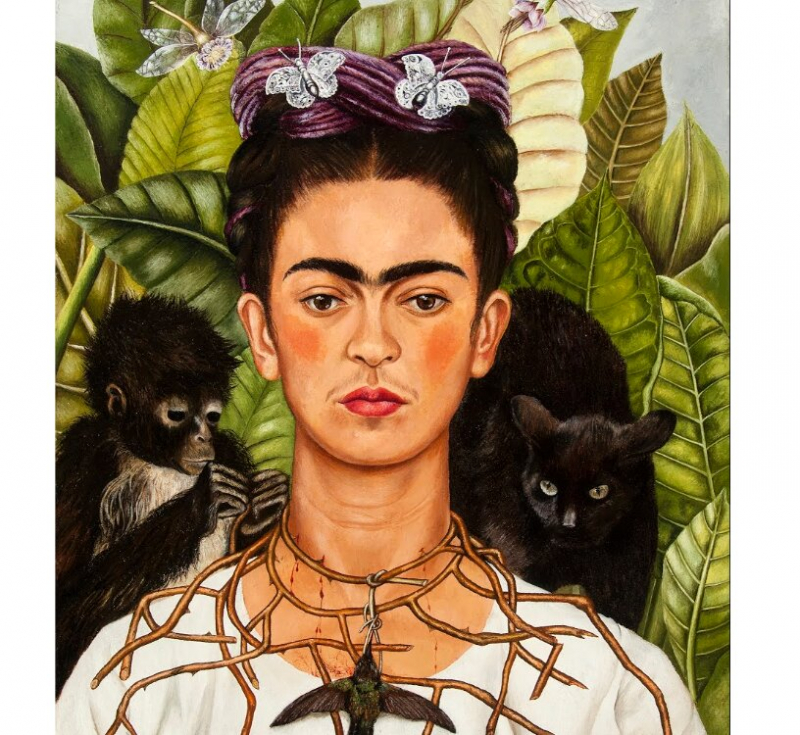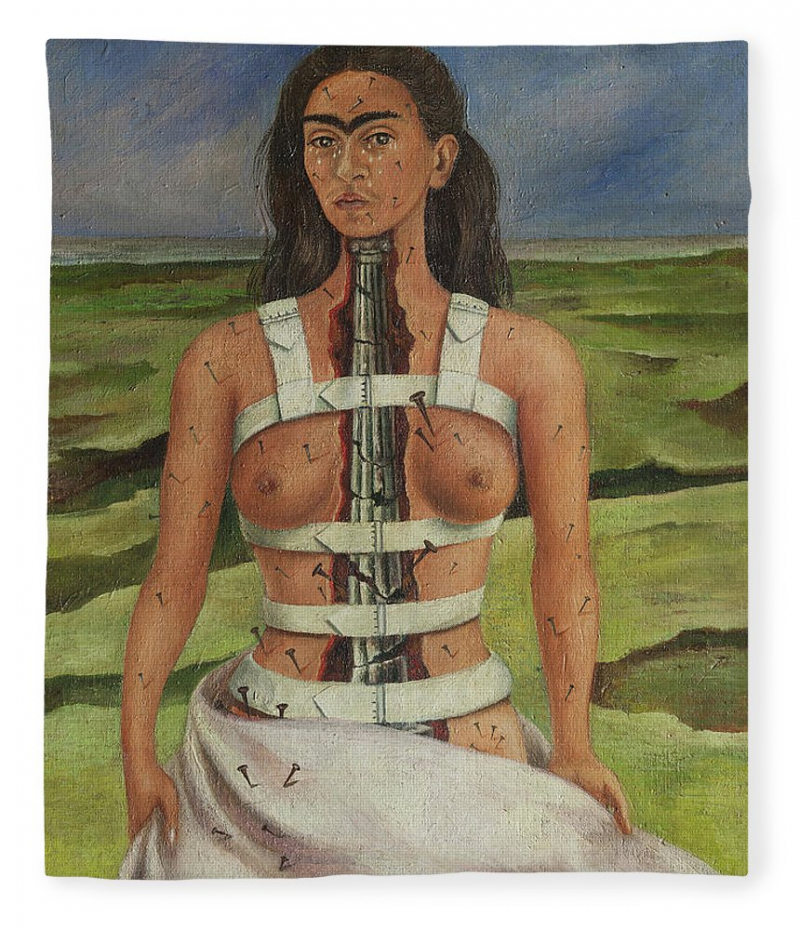Kahlo expressed her life and feelings through her art
Frida Kahlo's artwork was intensely personal and represented the sadness in her life, as we briefly mentioned previously. She poured her heart and energy into her work, providing us with a glimpse into her life in the process. She discussed her troubled marriage to Diego Rivera, her inability to have children, her bus accident, her deteriorating health, and her general outlook on life. Around 60 self-portraits were among the 150 paintings Frida produced throughout her lifetime. "I paint myself because I am alone so much of the time and because I am the subject I know best," remarked Kahlo. In My Nurse and I (1937), she gives a retrospective account of her childhood and occasionally includes her parents. As in the artwork Henry Ford Hospital, she also depicts her relationship and talks about their miscarriages (1932).
Her life and work are interwoven. Her works are metaphorical biography of her life. The Broken Column, one of Frida Kahlo's most well-known images, was created in the year 1944. She portrayed herself as divided down the middle and nude in this picture. Her back is broken like a column. She has nails all over her body and is wearing a medical brace, which are signs of the constant suffering she endured. Frida used her art to convey her physical difficulties in this artwork. She underwent a few operations at that time, and to preserve her back spine, she had to wear specialized corsets. She receives a lot of medical care for her chronic pain, but nothing has been truly effective.
Additionally, Kahlo included political statements and feelings in several of her works. She emphasizes more of her "Mexicanness" in her self-portraits. It demonstrates her ardent love for the rich cultural history of her country. In actuality, she frequently dons the beautiful, floral-embroidered China Poblano, a traditional garment. She also regularly sports flower-adorned braids or buns. More generally, Mexican culture is shown in many of her works, particularly through its flora and wildlife. She incorporates local folklore (flags, gorgeous corpses, and parrots and cactus) as well as other objects into her works. Several of her artworks also prominently display her passion for politics. Marxism will restore Health to the Sick (1954) and Her Self-Portrait with Stalin (1954) attest to this. Numerous allusions to death may be seen near the end of her life when she portrays herself as a deer that has been shot with arrows or standing next to corpses.













